Trees we plant
The tree species we work with are chosen for their suitability to local growing conditions and their value as commercial timbers. This selection of which species to plant is made together with the farmer on who's land the trees will be planted. Trees4Trees suggests a mix of species that will be most suitable to a particular plot's soil and exposure along with the farmer's economic goals. Finally it is the farmer's decision which species are actually planted. In this way, the farmer is fully engaged to cultivate and protect the trees and success is assured.
Click on the trees below to see some general information about the species we are planting.
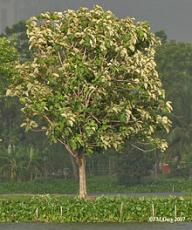
Teak is the common name for the tropical hardwood tree species Tectona Grandis and its wood products. Also known locally as Jati, Tectona grandis is a large, deciduous tree reaching over 30 m in height in favorable conditions. The crown is open with many small branches; the bole is often buttressed and may be fluted. The leaves are very large, shiny above, hairy below with a vein network about 30 x 20 cm but young leaves can be up to 1 m long.
Its natural distribution is in Southeast Asia, from the Indian subcontinent through Myanmar and Thailand to Laos. Whether the ‘natural’ stands in Indonesia are indigenous is not clearly established. It may have been introduced by Hindu settlers, possibly in the 7th century. It is believed teak was introduced to Java 400-600 years ago from India.
T. grandis will survive and grow under a wide range of climatic conditions. It grows best in a warm, moist, tropical climate with a significant difference between dry and wet seasons. For plantations, trees are initially spaced at 2 x 2 m. Being a deciduous tree, raising pure plantations of teak is discouraged; it is recommended to raise a mixture of 80% mixed indigenous species and the remaining 20% of Tectona Grandis.
Intercropping: Soya bean mixed with Tectona Grandis not only allows harvesting of the bean for food, it makes the trees grow better. The soya stems, roots and leaves are added to the soil as fertilizer and to stabilize the soil.
Uses: A rare combination of superior physical and mechanical properties makes Teak an ideal timber, with no likelihood of being surpassed by another species. The wood is a medium density and hardness timber. The heartwood is often red or yellow and even green when freshly cut but turns golden brow after exposure. Grain is straight or wavy with somewhat irregular texture. The wood is oily to the touch and when freshly cut has a smell suggestive of leather. Being classified as very resistant to teredo activity, the wood is excellent timber for bridge building and other construction in contact with water such as docks, quays, piers and floodgates in fresh water. In house building, teakwood is particularly suitable for interior and exterior joinery (windows, solid panel doors and framing) and is used for floors exposed to light to moderate pedestrian traffic. It is also used quite extensively for garden furniture. It is brittle and therefore less suitable for articles requiring high resilience, such as tool handles and sporting goods. Its high resistance to a wide variety of chemicals makes it ideal for laboratory and kitchen tables. The wood grains are figured well, producing an attractive veneer, which is extensively used in the manufacture of furniture and interior fittings. The wood is very durable, saws fairly and seasons easily. For the export market, teakwood is recommended for ship decking and other constructional work in boat building. Tectona Grandis is economically one of the most important timber tree species of Indonesia. Tannin or dyestuff: Both the rootbark and the young leaves produce a yellowish-brown or reddish dye, which is used for paper, clothes and matting. Medicine: In traditional medicine, a wood powder paste has been used against bilious headaches and swellings and internally against dermatitis or as a vermifuge. The charred wood soaked in poppy juice and made into a paste has been used to relieve the swelling of the eyelids. The bark has been used as an astringent and the wood as a hair tonic. Other products: Sawdust from teakwood is used as incense in Java; the dust, however, may irritate the skin.
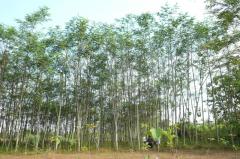
Albazia, botanic name, Paraserianthes falcataria (L.) Nielsen, locally known as Sengon, is one of the most important pioneer multipurpose tree species in Indonesia. It is one of the tree species preferred for industrial forest plantations in Indonesia because of its very fast growth, its ability to grow on a variety of soils, its favourable silvicultural characteristics and its acceptable quality of wood for the panel and plywood industries. Albizia plays an important role in both commercial and traditional farming systems in many sites in Indonesia.
P. falcataria grows so fast that it is sometimes called the “miracle tree”. It is even mentioned in the Guinness Book of Records as the world’s fastest growing tree. On good sites it can attain a height of 7 m in just over a year. Albizia is a large tree that can grow up to 40 m tall with the first branch at a height of up to 20 m. The tree can grow to 100 cm or sometimes more in diameter, with a spreading flat crown. When grown in the open, trees form a large umbrella-shaped canopy.
Albizia is native to Indonesia, Papua New Guinea, Solomon Islands and Australia. Natural stands of P. falcataria are scattered around the eastern part of Indonesia (i.e. South Sulawesi, Maluku and Papua). Albizia can grow on a wide range of soils. It does not require fertile soil; it can grow well on dry soils, damp soils and even on salty to acid soils as long as drainage is sufficient.
In West Java, where growing conditions are optimal, P. falcataria is one of the important commercial timber species used for both the pulp and paper industry and furniture. The wood is also suitable for general purposes such as light construction (e.g. rafters, panelling, interior trim, furniture and cabinetwork), lightweight packing materials (e.g. packages, boxes, cigar and cigarette boxes, crates, tea chests and pallets), matches, wooden shoes, musical instruments, toys, novelties and general turnery. The wood is an important source of lightweight veneer and plywood and is very suitable for the manufacture of light- and medium-density particleboard, wood- wool board and hardboard as well as block-board. The wood is extensively used for the manufacture of rayon and for supplying pulp for the manufacture of paper (Soerianegara and Lemmens 1993).
As a nitrogen-fixing species, P. falcataria is also commonly planted for reforestation and afforestation to improve soil fertility (Heyne 1987). The natural drop of leaves and small branches contributes nitrogen, organic matter and minerals to the upper layers of soil (Orwa et al. 2009). The trees are sometimes interplanted with agricultural crops such as corn and cassava and fruit trees (Charomaini and Suhaendi 1997). They are often planted in home gardens for fuelwood (charcoal), and the leaves can be used as fodder for chickens and goats. The bark is reported to serve as tannin nets in Ambon (Maluku), and is sometimes used locally as a substitute for soap. The trees are also planted as windbreaks and firebreaks. They have been used as ornamental and shade trees planted along the sides of the highway from the Indonesian capital Jakarta to the West Java city of Bogor.
References:
Cifor:
Haruni Krisnawati
Eveliina Varis
Maarit Kallio
Markku Kanninen
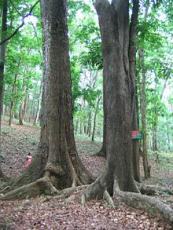
Mahogany is any of many different kinds of tropical hardwood, most of which are reddish-brown wood that is widely used in furniture-making, boat building, and other high specification uses. However, there are only three species of true mahogany, all indigenous to the Americas. These are Swietenia mahagoni (L.) Jacq., S. macrophylla King, and S. humilis Zucc.
The natural distribution of these species within the Americas is geographically distinct. S. mahagoni grows on the West Indian islands as far north as the Bahamas, the Florida Keys and parts of Florida; S. humilis grows in the dry regions of the Pacific coast of Central America from south-western Mexico to Costa Rica; S. macrophylla grows in Central America from Yucatan southwards and into South America, extending as far as Peru, Bolivia and extreme western Brazil.[1] In the 20th century various botanists attempted to further to define S. macrophylla in South America as a new species, such as S. candollei Pittier and S. tessmannii Harms., but many authorities consider these spurious. According to Record and Hess, all of the mahogany of continental North and South America can be considered as one botanical species, Swietenia macrophylla King.[2]
The name mahogany was initially associated only with those islands in the West Indies under British control (French colonists used the term acajou, while in the Spanish territories it was called caoba). The origin of the name is uncertain, but it could be a corruption of 'm'oganwo', the name used by the Yoruba and Ibo people of West Africa to described trees of the genus Khaya, which is closely related to Swietenia. When transported to Jamaica as slaves, they gave the same name to the similar trees they saw there.[3]
Though this interpretation has been disputed, no one has suggested a more plausible origin.[4] The indigenous Arawak name for the tree is not known. In 1671 the word mahogany appeared in print for the first time, in John Ogilby's America.[5] Among botanists and naturalists, however, the tree was considered a type of cedar, and in 1759 was classified by Carl Linnaeus (1707–1778) as Cedrela mahagoni. The following year it was assigned to a new genus by Nicholas Joseph Jacquin (1727–1817), and named Swietenia mahagoni.
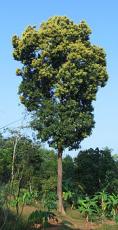
Mango trees (Mangifera indica L.) grow up to 35–40 m (115–130 ft) tall, with a crown radius of 10 m (33 ft). The trees are long-lived, as some specimens still fruit after 300 years. In deep soil, the taproot descends to a depth of 6 m (20 ft), with profuse, wide-spreading feeder roots; the tree also sends down many anchor roots, which penetrate several feet of soil.
The leaves are evergreen, alternate, simple, 15–35 cm (5.9–14 in) long and 6–16 cm (2.4–6.3 in) broad; when the leaves are young they are orange-pink, rapidly changing to a dark, glossy red, then dark green as they mature.
The flowers are produced in terminal panicles 10–40 cm (3.9–16 in) long; each flower is small and white with five petals 5–10 mm (0.20–0.39 in) long, with a mild, sweet odor suggestive of lily of the valley. The fruit takes three to six months to ripen.
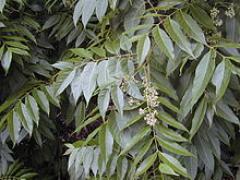
This plant is known as a producer of good quality wood. In nature it is found from Afghanistan continues to the east to Australia and Korea.
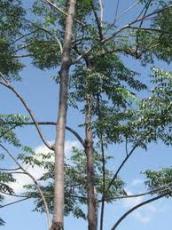
Mindi tree (Melia azedarach L.) is a fast growing tree species in tropical evergreen and shed leaves during winter, like a light, somewhat drought resistant, somewhat tolerant of salinity and infertile soil below freezing point. At the age of 10 years can reach 8 feet tall branches and diameter of +/- 40 cm.
Tree reaching 45 m high, tall branches 80-20 m, diameter up to 60 cm.
Canopy resembles an umbrella, branching wide, sometimes leaf drop.
Trunk cylindrical, straight, no buttress roots, bark gray-brown, grooved to form lines and scales. On young trees have smooth skin and has lenticels; wood pale white pig; reddish brown wooden porch.
Double compound leaves odd pinnate, leaf kids round or oval eggs, gear leaf blade edge. Panicle compound interest, in the armpit leaves, panicles 10-22 cm long, color purple, androgynous (bisexual) or male flowers and female flowers on the same tree.
Fruits round or oblong, not opening, the size of 2-4 cm x 1-2 cm, the outer skin is thin, smooth, dry skin wrinkles in the leather hard, young green fruit, ripe yellow fruit, the fruit generally have a 4-5 seed. Seeds 3.5 x 1.6 mm small, oval, smooth, brown, black dry beans.
Distribution and place grow
Mindi tree has a natural distribution in India and Burma, widely planted in tropical and subtropical regions, in Indoanesia widely planted in the Sumatra region, Java, Nusa Tenggara and Papua.
Mindi plants grown in the lowlands to highlands, altitude 0-1200 m above sea level, with an average rainfall per annum 600-2000 mm, can grow on any type of soil. drainase thrives on good soil, soil yag deep, sandy clay, tolerant of shallow soil, salty and alkaline soil.
Mindi plants flowering and fruiting season has different between places with one another.
Flowering plants in West Java in the months of March through May, in East Java, between the months of June through November. In West Nusa Tenggara in the month of September and June.Fruit ripe in the month of June, August, November and December.
Extraction was done by soaking seeds in water for 1 fruitup to two days, then cleaned and dried beans in the shade. Amountdry beans per kilogram + / - 3000 points.
Seed storage performed by inserting a seed into a tightly closed container, stored in a cold room (temperature 3-5 ° C) germination of 80% for one year and down 20% after five years.
Mindi is a generative breeding (using bean), to remove the seed coat dormancy which can inhibit the germination was carried out byremoving skin from fruit or in other ways by soaking seeds in water temperature 80 ° C for 30 minutes.
Sowing seeds in the hotbed that is not doneclosed.
Seeds thinly covered soil or leaf litter.
After the seedling reaches a height of 2-4cm can be moved to 200-300 ml size plastic bag containing the soil layertop(top-soil).
Seeds kept in the nursery until the height reached 20-30 cm.
Seedlings ready for planting at the age of 4 months to 6 months. Where will useseeds in the form of stumps, made by cutting the stem and taproot,each measuring 20 cm and root collar diameter should be between 11-25 cm.
Vegetatively propagated plants can be done by making cuttings stem. Giving the hormone indole butiric acid (IBA) with a dose of 50 ppm at Mindi cuttings can enhance its success.
Investment
Planting in the field should be done after the net open area, hoeto a depth of 30 cm. Limited planting root neck. Opened from the seedlingsplace, there can be no roots folded. Mindi plant spacing can be 2 m x 2 mor 2 m x 3 m.
Maintenance
Plant maintenance in the form of fertilizer needs to be done. Weeding weedsperformed several times in the first and second. Thinning performed after 3-year-old plants with leaves 400 stems per hectare, then at the age of 6 years crop thinning done again until the number of trees per hectare to 200 bars.
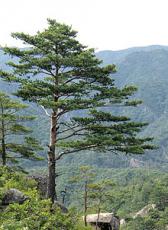
Pines are native to most of the Northern Hemisphere, and have been introduced throughout most temperate and subtropical regions of the world, where they are grown as timber and cultivated as ornamental plants in parks and gardens.
One species (Sumatran Pine) crosses the equator in Sumatra to 2°S. In North America, they range from 66°N to 12°N. A number of introduced species have become invasive,[3] threatening native ecosystems.
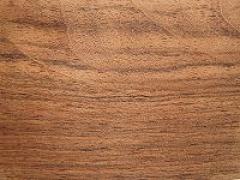
All genuine rosewoods belong to the genus Dalbergia. The pre-eminent rosewood appreciated in the western world is the wood of Dalbergia nigra which is now a CITES – listed endangered species. It is best known as Brazilian Rosewood, but also as "Rio Rosewood" or "Bahia Rosewood." This wood has a strong sweet smell, which persists over the years, explaining the name "rosewood".[citation needed]
Another classic rosewood is that yielded by Dalbergia latifolia known as (East) Indian Rosewood or sonokeling. It can be found in tropical America, Southeast Asia, and Madagascar.[citation needed]
Dalbergia sissoo is also known as Indian rosewood. It is extremely dense, strong, and durable. It is stronger than teak and is comparable in price. The valuable timber is used for quality furnishings.[citation needed]
Not all species in the large genus Dalbergia yield rosewoods; only about a dozen species do. The woods of some other species in the genus Dalbergia are notable—even famous—woods in their own right: African Blackwood, Cocobolo, Kingwood, and Tulipwood. The woods of some other species are usable for tool handles at best.[citation needed]




